C Nmr
Shows The 13 C Nmr For The Tmg Two Characteristic Chemical Shifts Download Scientific Diagram
Philosophy To Chemistry To Elucidation 13c Nmr

13carbon Nmr
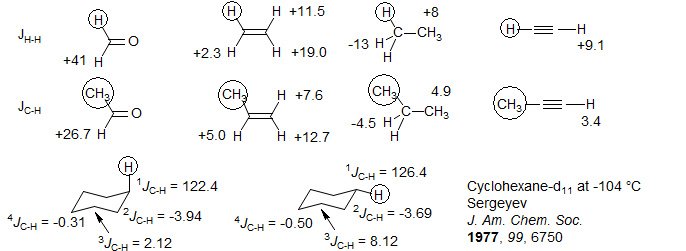
Nmr Spectroscopy 6 Cmr 6 Two And Three Bond Carbon Proton Couplings

Analytical Chemistry A Guide To 13 C Nuclear Magnetic Resonance Nmr Compound Interest

Chemical Constituents From Bombacopsis Glabra Pasq A Robyns Complete H And 13c Nmr Assignments And X Ray Structure Of 5 Hydroxy 3 6 7 8 4 Pentamethoxyflavone
Cambridge Isotope Laboratories, Inc NMR spectra were recorded at 298 K using 300, 500, or 600 MHz spectrometers ( 13 C{ 1 H} NMR frequencies of 755, 126, or 151 MHz, res.

C nmr. Table 132 Regions of the IH NMR Spectrum Halogen Chemical shift (ô) c— / I Allylic c Saturated I Aromatic c=c Vinylic Table 133 Correlation of IH Chemical Shift with Environment c— c— c— c— 0— c— Cqrboxylic acid OH Nitrile Nitro N02 3300 3030 1660. This set of pages originates from Professor Hans Reich (UWMadison) "Structure Determination Using Spectroscopic Methods" course (Chem 605) It describes Nuclear Magnetic Resonance (NMR) in details relevant to Organic Chemistry It also includes NMR summary data on coupling constants and chemical shift of 1H, 13C, 19F, 31P, 77Se, 11B Spectra (PDF form) of more than 600 compounds are also. CNMR Spectroscopy It is useful to compare and contrast HNMR and CNMR as there are certain differences and similarities 13 C has only about 11% natural abundance (of carbon atoms);.
The basics of 13 CNMR spectroscopy Unlike 1 HNMR signals, the area under a 13 CNMR signal cannot be used to determine the number of carbons to which it corresponds This is because the signals for some types of carbons are inherently weaker than for other types – peaks corresponding to carbonyl carbons, for example, are much smaller than those for methyl or methylene (CH 2) peaks. Internal standards such as TMS (for organic solvents) or DSS and TSP (for aqueous samples) will give you an exact NMR reference For nuclei other than 13 C or 1 H, additional standards can be used such as phosphoric acid for 31 P Internal standards can be added directly to the sample if desired In this situation, just a drop of TMS is often. Indicated by the chemical shift of each signal Here are some examples of 13 CNMR spectra.
13 Carbon NMR The 1D 13 Carbon NMR experiment is much less sensitive than Proton (1 H) but has a much larger chemical shift range Its low natural abundance (1108%) and proton decoupling means that spinspin couplings are seldom observed This greatly simplifies the spectrum and makes it less crowded13. Carbon13 has a nuclear spin (I = ½) and makes up 11% of all naturally occurring carbon, a high enough abundance along with modern technology to make carbon nuclear magnetic resonance spectroscopy (13 CNMR) a useful technique Since carbon is the element central to organic chemistry, 13 CNMR plays an important role in determining the. Internal standards such as TMS (for organic solvents) or DSS and TSP (for aqueous samples) will give you an exact NMR reference For nuclei other than 13 C or 1 H, additional standards can be used such as phosphoric acid for 31 P Internal standards can be added directly to the sample if desired In this situation, just a drop of TMS is often.
1H NMR spectra of small molecules;. Peak picking 1D peak picking and. Welcome to WebSpectra This site was established to provide chemistry students with a library of spectroscopy problems Interpretation of spectra is a technique that requires practice this site provides 1 H NMR and 13 C NMR, DEPT, COSY and IR spectra of various compounds for students to interpret Hopefully, these problems will provide a useful resource to better understand spectroscopy.
13 C nucleus is also a spin 1/2 nucleus;. The same solvents are used for 13 C NMR spectra, so the same rules about splitting patterns apply here also It used to be common practice to add Me 4 Si, or related compounds, as an internal reference standard for 1 H and 13 C NMR spectra with the proton signal occurring at 00 ppm and the carbon signal occurring at 00 ppm in the 13 C NMR. C NMR spectra, or for signals in 1 Hdecoupled spectra that are coupledto other mag netically active nuclei 172 A 13 C NMR signal will be considered a singlet if the multiplicity is not assigned 173 Only rarely is a true multiplet observed in a 13 C{1 H} NMR spectrum However, a certain region may contain a group of unresolved.
NMR Practice Problems Spring 14 2 Fall 07 1 Compound W has an empirical formula of C 10 H 13 NO 2 Given are the following spectra a Determine the degree of unsaturation for the compound b Assign five pertinent peaks in the IR spectrum c Suggest a structure for compound W based on the spectra given. 13CNMR We can examine the nuclear magnetic properties of carbon atoms in a molecule to learn about a molecules structure Most carbons are 12C;. Phosphorus31 NMR spectroscopy is an analytical chemistry technique that uses nuclear magnetic resonance (NMR) to study chemical compounds that contain phosphorusPhosphorus is commonly found in organic compounds and coordination complexes (as phosphines), making it useful to measure 31 P NMR spectra routinely Solution 31 PNMR is one of the more routine NMR techniques because 31 P has an.
13C NMR Chemical Shift Table 1400 10 130 110 215 0 1800 1650 60 10 800 600 70 40 95 80 60 30 70 40 800 550 1250 1150 2 0 180 160 140 1 100 80 60 40 0 ppm Alcohols Ethers Substituted Benzenes Alkenes Carbonyl Ester Amide Carboxylic Acid Carbonyl Aldehyde Ketone Alkanes Alkynes Amines Alkyl bromides Alkyl chlorides Alkyl. The C13 NMR spectrum for a more complicated compound This is the C13 NMR spectrum for 1methylethyl propanoate (also known as isopropyl propanoate or isopropyl propionate) This time there are 5 lines in the spectrum That means that there must be 5 different environments for the carbon atoms in the compound Is that reasonable from the. Carbon13 has a nuclear spin (I = ½) and makes up 11% of all naturally occurring carbon, a high enough abundance along with modern technology to make carbon nuclear magnetic resonance spectroscopy (13 CNMR) a useful technique Since carbon is the element central to organic chemistry, 13 CNMR plays an important role in determining the.
Basics of 13C NMR followed by a look at some spectra. NMR Exercises 13C NMR;. Indicated by how many signals there are in the spectra What types of C ?.
Representative literature data are summarized in Table 2In the 13 C NMR spectrum, the isocyanide W–C signal typically occurs in the region δ145–180, whereas the W. Table 132 Regions of the IH NMR Spectrum Halogen Chemical shift (ô) c— / I Allylic c Saturated I Aromatic c=c Vinylic Table 133 Correlation of IH Chemical Shift with Environment c— c— c— c— 0— c— Cqrboxylic acid OH Nitrile Nitro N02 3300 3030 1660. 13C NMR spectroscopy Shielding and deshielding Shielding and deshielding effects explain the chemical shifts that we observe in the NMR The closer the 13C nucleus is to an electronegative atom the more deshielded it will be Electronegative atoms (like O, Cl, Br etc) or multiple bonds (C=C, C≡C) partially remove electrons from the 13C.
Skalitzky, D J Tetrahedron Lett 1990, 31, 945–948 Me Me 13C NMR Analysis of acetonide carbons 1,3Diol Stereochemistry Derivatization as Acetonide. 13C NMR 13C NMR is a spectroscopic method used to determine the types and number of carbon atoms present in a molecule Detection 1H NMR 1H NMR detect proton nuclei 13C NMR 13C NMR detects carbon nuclei Chemical Shift Range 1H NMR The chemical shift range of 1H NMR is 014 ppm 13C NMR The chemical shift range of 13C NMR is 0240 ppm. 13C NMR—Position of Signals In contrast to the small range of chemical shifts in 1HNMR (110 ppm usually), 13C NMR absorptions occur over amuch broader range (02 ppm) The chemical shifts of carbon atoms in 13C NMR dependon the same effects as the chemical shifts of protons in 1HNMR 10.
Just like the 1 H NMR, the reference point is the signal from TMS which again is set to 0 ppm So, ignore this peak when analyzing a carbon NMR Most organic functional groups give signal from 02 ppm Here as well, the carbons connected to electronegative elements resonate downfield (higher energy). 1H NMR basic structure assignment;. In c (DEPT135) signals from CH 2 will be negative, while CH and CH 3 positive Below is the pulse sequence diagram for DEPT Implementations DEPTc (Varian,Inc) References Berger, S and Braun, S and Kalinowski, HO 0 and more NMR experiments a practical course WileyVch Weinheim, 04 BibTeX 0.
1H NMR spectra of Boc amino acids;. 13C NMR Analysis of acetonide carbons 1,3Diol Stereochemistry Derivatization as Acetonide Chart adapted from Rychnovsky, S D;. The following information is to be gained from a typical broadband decoupled 13 CNMR spectrum How many types of C ?.
CH couplings are not seen in carbon NMR because the standard C NMR pulse sequence involves CH decoupling, to prevent peak splitting due to attached hydrogens However, common CNMR pulse. This demo will simulate 1 H and 13 C NMR spectra, as well as the mass spectrum parent peak (isotopic distribution), of the molecule you draw in the sketcher Click the Simulate Spectra button to simulate the spectra when you finish drawing your molecule The spectra are interactive, so you can change their perspectives For more simulation options, atom assignments and publishing features. In C13 NMR, you can't draw any simple conclusions from the heights of the various peaks The C13 NMR spectrum for 1methylethyl propanoate 1methylethyl propanoate is also known as isopropyl propanoate or isopropyl propionate.
Carbon13 has a nuclear spin (I = ½) and makes up 11% of all naturally occurring carbon, a high enough abundance along with modern technology to make carbon nuclear magnetic resonance spectroscopy (13 CNMR) a useful technique Since carbon is the element central to organic chemistry, 13 CNMR plays an important role in determining the. With 1 H NMR a useful spectrum can be obtained very quickly (5 minutes) with a few milligrams of material, however with 13 C NMR normally the minimum scan time would be longer (~30 minutes) and. 13 C NMR **Spectrum C1 Spectrum C2 Spectrum C3 Spectrum C4 **Spectrum C5 Spectrum C6 Spectrum C7 Spectrum C8 **Spectrum C9 Spectrum C10 Spectrum C11 Spectrum C12 **Spectrum C13 Spectrum C14 Spectrum C15 Spectrum C16.
Using the simplified table of chemical shifts above, work out the structure of the compound with the following C13 NMR spectrum Its molecular formula is \(C_4H_6O_2\) Let's sort out what we've got There are four peaks and four carbons No two carbons are in exactly the same environment. Suggest an assignment for the following 13 C NMR peaks a) 12 ppm b) 58 ppm c) 22 ppm d) 41 ppm Problem NMR52 Draw the predicted 13 C NMR spectra for the following compounds Back Next This site is written and maintained by Chris P Schaller, PhD, College of Saint Benedict / Saint John's University (with contributions from other authors. 40 Ca 13C NMR Spectroscopy of Aromatic Compounds As with other 13C NMR spectra, aromatic compounds display single lines for each unique carbon environment in a benzene ring Aromatic carbons appear between 1170 ppm The 13C NMR spectra of bromobenzene and pbromoethylbenzene are shown below for comparisonThere are four different carbon environments in bromobenzene, and four different peaks.
With 1 H NMR a useful spectrum can be obtained very quickly (5 minutes) with a few milligrams of material, however with 13 C NMR normally the minimum scan time would be longer (~30 minutes) and. 13C NMR 13C NMR is a spectroscopic method used to determine the types and number of carbon atoms present in a molecule Detection 1H NMR 1H NMR detect proton nuclei 13C NMR 13C NMR detects carbon nuclei Chemical Shift Range 1H NMR The chemical shift range of 1H NMR is 014 ppm 13C NMR The chemical shift range of 13C NMR is 0240 ppm. The same solvents are used for 13 C NMR spectra, so the same rules about splitting patterns apply here also It used to be common practice to add Me 4 Si, or related compounds, as an internal reference standard for 1 H and 13 C NMR spectra with the proton signal occurring at 00 ppm and the carbon signal occurring at 00 ppm in the 13 C NMR.
Graphite oxide (GO) and its derivatives have been studied using 13C and 1H NMR The 13C NMR lines at 60, 70, and 130 ppm are assigned to C−OH, C−O−C, and >CC< groups in the bulk of the material, respectively The >CC< double bonds are relatively stable, while C−OH groups may condense to form C−O−C (ether) linkages There are at least two magnetically inequivalent C−OH sites, and. Analyze the 'H and "C NMR spectra provided for the unknown compound at the back of this quiz In the boxes below, list the diagnostic resonances and the organic fragments corresponding to these resonances from the two different types of NMR spectra. 40 Ca 13C NMR Spectroscopy of Aromatic Compounds As with other 13C NMR spectra, aromatic compounds display single lines for each unique carbon environment in a benzene ring Aromatic carbons appear between 1170 ppm The 13C NMR spectra of bromobenzene and pbromoethylbenzene are shown below for comparisonThere are four different carbon environments in bromobenzene, and four different peaks.
Carbon13 has a nuclear spin (I = ½) and makes up 11% of all naturally occurring carbon, a high enough abundance along with modern technology to make carbon nuclear magnetic resonance spectroscopy (13 CNMR) a useful technique Since carbon is the element central to organic chemistry, 13 CNMR plays an important role in determining the. 12C has an even number of protons and neutrons and cannot be observed by NMR techniques Only 1% of carbons are 13C, and these we can see in the NMR This makes 13CNMR much less senstive than carbon NMR. The 13 C NMR spectra of each individual diastereoisomer of 3,6dihydro2,3,5,6tetramethoxycarbonyl2Hthiopyran have been assigned and chemical shift data are also available for the four diastereoisomers of 3,6dihydro3,5,6trimethoxycarbonyl2Hthiopyran, though individual conformers are not assignedIn the latter examples, selected 1 J CH data are available with values of.
Assign 1H NMR spectra to molecule;. Number of different Hs;. Analyze the 'H and "C NMR spectra provided for the unknown compound at the back of this quiz In the boxes below, list the diagnostic resonances and the organic fragments corresponding to these resonances from the two different types of NMR spectra.
13CNMR spectrum of a methine 13C is a doublet 13CNMR spectrum of a quaternary 13C is a singlet J CH =125 – 250Hz leads to extensive overlap – making Interpretation difficult (‘multiplets are not ‘localized’ well) The position of resonance (chemical shift) is dependent on the degree of shielding of the particular carbon Un. Typical Chemical Shifts in Carbon NMR Spectra Structure Chemical Shift (ppm) Carbonyl (ketone) 52 Carbonyl (aldehyde). This set of pages originates from Professor Hans Reich (UWMadison) "Structure Determination Using Spectroscopic Methods" course (Chem 605) It describes Nuclear Magnetic Resonance (NMR) in details relevant to Organic Chemistry It also includes NMR summary data on coupling constants and chemical shift of 1H, 13C, 19F, 31P, 77Se, 11B Spectra (PDF form) of more than 600 compounds are also.
Solvent Formula 1 HNMR shift (ppm) 13 CNMR shift (ppm) Multiplet J CD (Hz) mp (o C)bp(o C)Comments Chloroformd CDCl 3 724 770 triplet 3264 61. Carbon13 has a nuclear spin (I = ½) and makes up 11% of all naturally occurring carbon, a high enough abundance along with modern technology to make carbon nuclear magnetic resonance spectroscopy (13 CNMR) a useful technique Since carbon is the element central to organic chemistry, 13 CNMR plays an important role in determining the. The 13 C nmr spectrum of camphor shown below will serve as an illustration It will be helpful to view an expanded section of this spectrum from δ 00 to 500 ppm, and this will be presented by clicking the "High Field Expansion" button The two lowest field signals are missing in the expanded display.
Question Determine The Structure Based On The 'Hand C NMR Spectra Given The Sum Formula For The Molecule Is CH3O The Intergrals For The 6 Signals In The 'H NMR Going From Left To Right Are Assign The Signals To The Carbon And Hydrogen Atom In The Structure As Accurately As Possible. Principles of nuclear magnetic resonance (NMR) When a nucleus that possesses a magnetic moment (such as a hydrogen nucleus 1 H, or carbon nucleus 13 C) is placed in a strong magnetic field, it will begin to precess, like a spinning top. This demo will simulate 1 H and 13 C NMR spectra, as well as the mass spectrum parent peak (isotopic distribution), of the molecule you draw in the sketcher Click the Simulate Spectra button to simulate the spectra when you finish drawing your molecule The spectra are interactive, so you can change their perspectives For more simulation options, atom assignments and publishing features.
13 C NMR **Spectrum C1 Spectrum C2 Spectrum C3 Spectrum C4 **Spectrum C5 Spectrum C6 Spectrum C7 Spectrum C8 **Spectrum C9 Spectrum C10 Spectrum C11 Spectrum C12 **Spectrum C13 Spectrum C14 Spectrum C15 Spectrum C16. Typical Chemical Shifts in Carbon NMR Spectra Structure Chemical Shift (ppm) Carbonyl (ketone) 52 Carbonyl (aldehyde). 1H NMR integrate and find the structure;.
Cambridge Isotope Laboratories, Inc NMR spectra were recorded at 298 K using 300, 500, or 600 MHz spectrometers ( 13 C{ 1 H} NMR frequencies of 755, 126, or 151 MHz, res. The firstgeneration NMR spectrometers used what is called “continuous wave field sweep” in which the frequency of rf radiation was kept constant and the magnetic field strength was slowly increased to detect which field strengths produce a signal. 13 C NMR and IR spectra are the most commonly used spectroscopic tools for the characterization of tungsten complexes having CO and/or isocyanide ligands, and a number of complexes have also been characterized by Xray methods;.
Multiplets Table 2 contains 13C{1H} NMR data for these same solvent impurities A tabulation of the 1H and 13C NMR data for all 48 impurities in order of chemical shift is included in the Supporting Information to aid in the assignment of unknown peaks All of the compounds in Table 1 were obtained as single isomers. 1H number of signals;. 13 C nucleus is about 400 times less sensitive than H nucleus to the NMR phenomena.
12 C does not exhibit NMR behaviour (I=0);. 13C NMR Chemical Shift Carbon (13 C) has a much broader chemical shift range One important difference is that the aromatic and alkene regions overlap to a significant extent. Carbon13 (C13) nuclear magnetic resonance (most commonly known as carbon13 NMR or 13C NMR or sometimes simply referred to as carbon NMR) is the application of nuclear magnetic resonance (NMR) spectroscopy to carbon It is analogous to proton NMR (1.
The 13 C Nmr Spectra Of The Quaternary Carbon Resonances Of Tmp For A Download Scientific Diagram

The Halogen Effect On The 13c Nmr Chemical Shift In Substituted Benzenes Physical Chemistry Chemical Physics Rsc Publishing

Ch 13 13c Nmr Spectroscopy
Q Tbn And9gcrzloscsfh Eo 5h Spuhgjtvjb9167yzu7wl23bcljccccjpz6 Usqp Cau

Ppt C Nmr Spectroscopy Powerpoint Presentation Free Download Id

13c Carbon Nmr Chemical Shift Values Chemical Shift Chemistry Study Guide Chemistry

13c Carbon Nmr Spectroscopy Chemistry Steps

How2 Interpret A Carbon 13 Nmr Spectrum Youtube

13 11 Characteristics Of C Nmr Spectroscopy Chemistry Libretexts

Dcm 75 09 2 13c Nmr
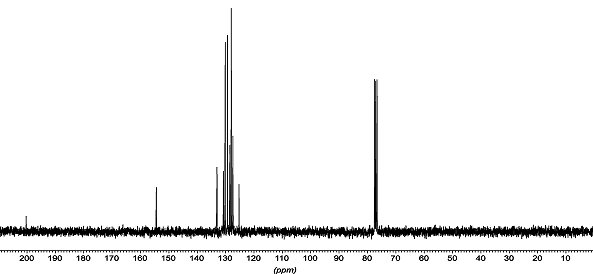
Nop Sustainability In The Organic Chemistry Lab Course

Examples Of 13c Nmr Spectra Anthony Crasto Spectroscopy

13c Nmr Proton Decoupled Spectrum Of Ethyl 2 Butenoate In Cdcl3 Organic Molecules Nuclear Magnetic Resonance Molecules
.jpg)
Assessing Regioselectivity Of Hydrochlorination

Deciphering 1h Nmr Spectra Organic Chemistry Help

Development Of Quantitative 13c Nmr Characterization And Simulation Of C H And O Content For Pyrolysis Oils Based On 13c Nmr Analysis Rsc Advances Rsc Publishing

Foods Free Full Text Application Of 1h And 13c Nmr Fingerprinting As A Tool For The Authentication Of Maltese Extra Virgin Olive Oil

Cnmr
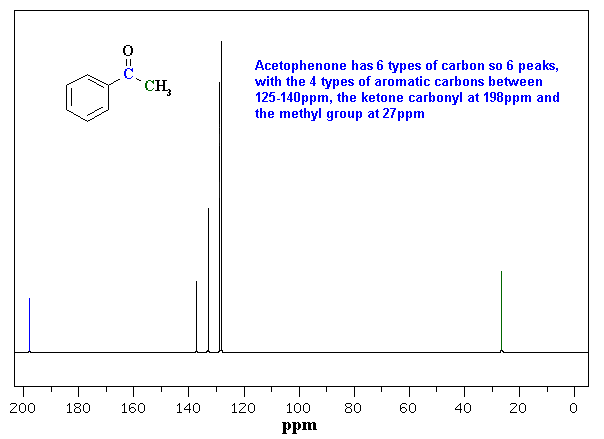
Ch13 Interpretting 13c Nmr

13carbon Nmr

13 C Nmr Spectra Of A 2 8 13 C 2 Enb Recorded At 300 Mhz B Download Scientific Diagram
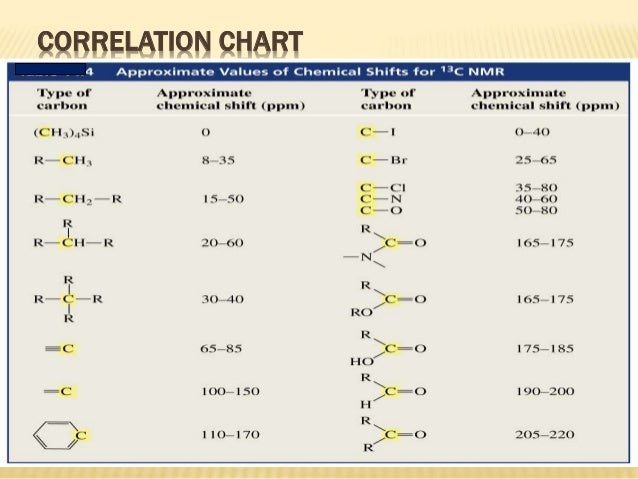
13 C Nmr Spectroscopy With Examples By Dr Anthony Crasto

13 C Nmr Spectra Of Ethene Y Copolymers With Similar Comonomer Content Download Scientific Diagram

Interpreting C 13 Nmr Spectra Chemistry Libretexts

Carbon 13 Nmr Wikidoc
Organic Spectroscopy International 13 C Nmr One For Your Eye
Q Tbn And9gcqpaduvyqp4ymfptw6 Gmjwi0hfrkge9xayz M6fteidd Jj1ap Usqp Cau
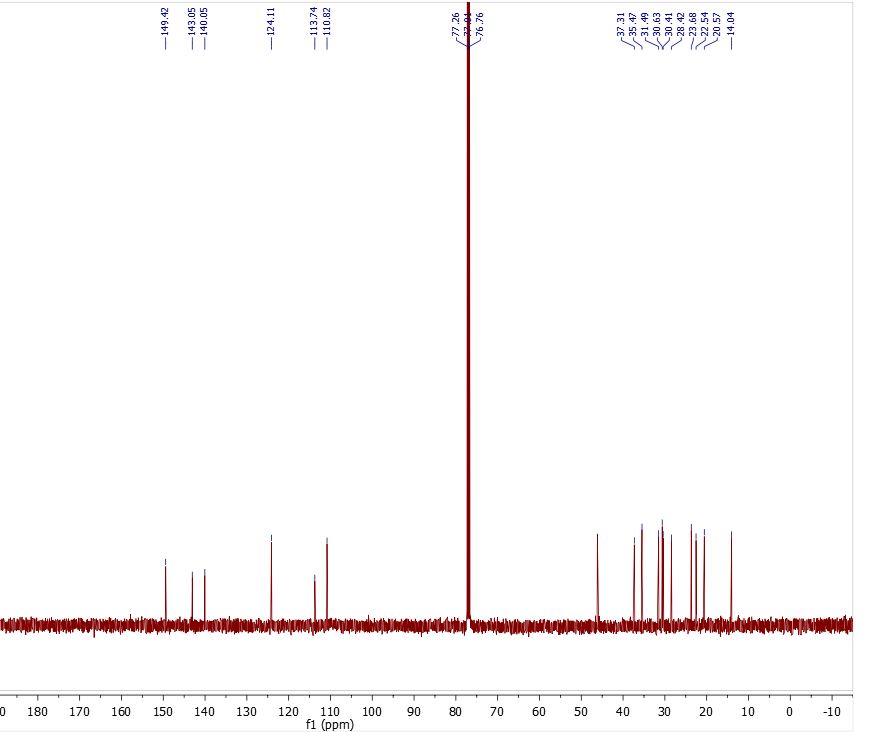
Spectroscopic Data Of Cbd 1h Nmr 13c Nmr Hsqc And Cosy Testing And Analytics Future40

University Of Ottawa Nmr Facility Blog 13c Nmr Of Vitamin C Solids Vs Liquids Nmr
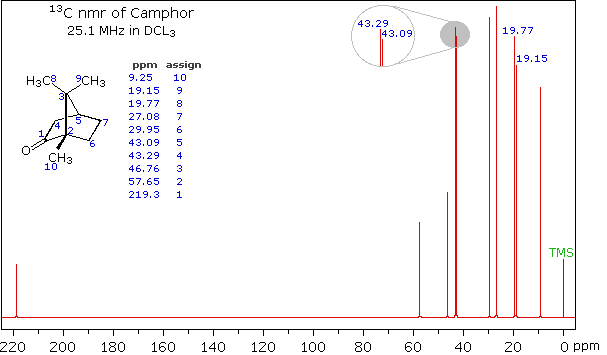
Nmr Spectroscopy

Difference Between 1h Nmr And 13c Nmr Definition Chemical Shift Features Examples And Differences

13c Carbon Nmr Spectroscopy Chemistry Steps

Linear Relationship Between 13 C Nmr Chemical Shifts And The Bending Of Sp Carbon Chains Chemistry A European Journal X Mol

13c Nmr Of Cholesterol On An 80 Mhz Magnet Magritek

How Many Unique 1 H Nmr And 13 C Nmr Signals Exist For The Following Compounds Study Com
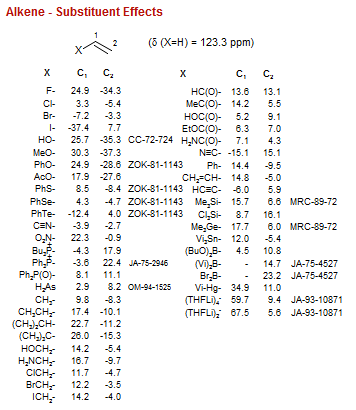
Nmr Spectroscopy 13c Nmr Chemical Shifts

13carbon Nmr

13 C Nmr Spectra Of Rh C 60 Polymer Asterisk Indicates Sideband A Download Scientific Diagram
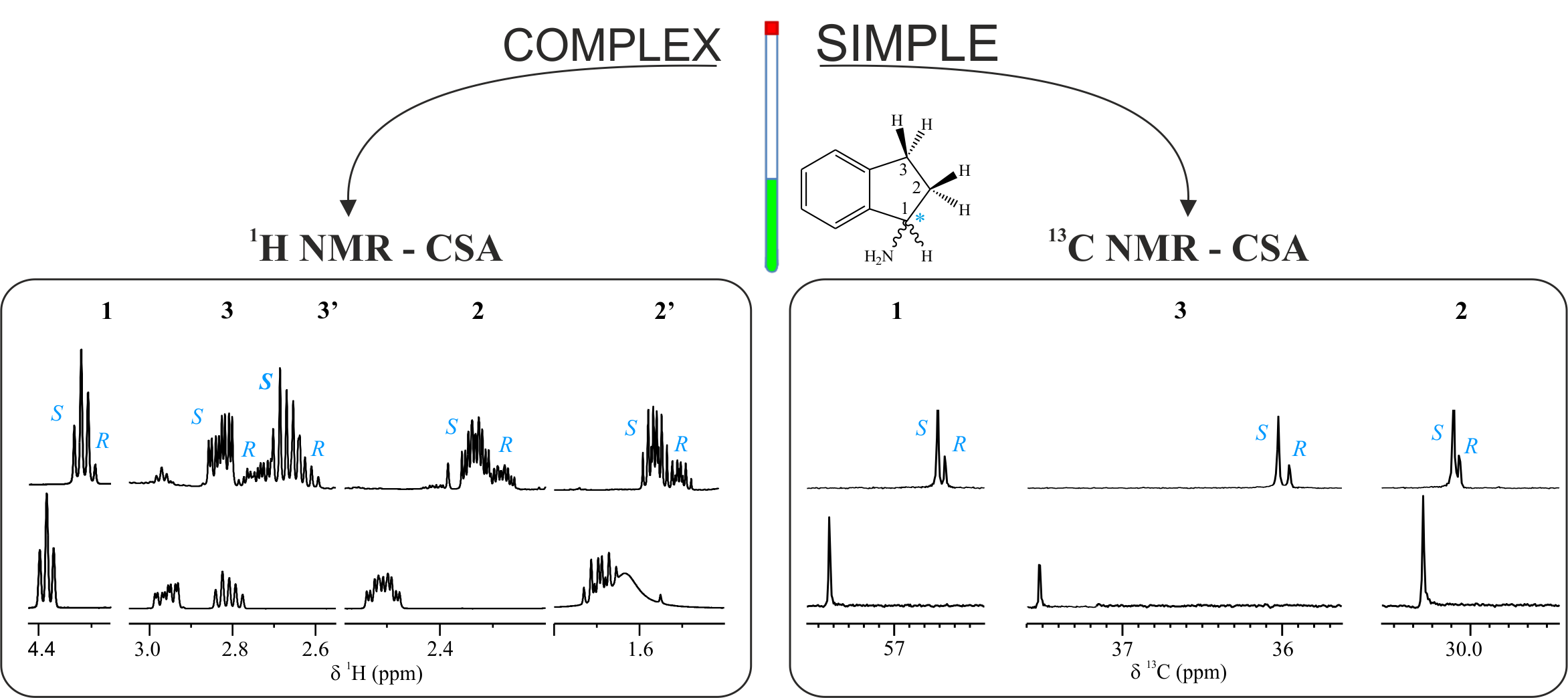
Enantiodifferentiation Through 13c Nmr Spectroscopy And Csas Sermn Nmr Service At Uab
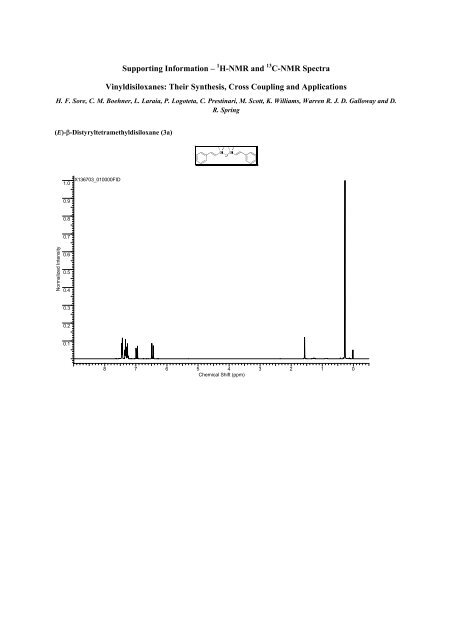
Supporting Information 1h Nmr And 13c Nmr Spectra

Nmr Vce Chemistry

Figure 13c Nmr Spectrum Cdcl3 500 Mhz Of The Probe Ml238 Probe Reports From The Nih Molecular Libraries Program Ncbi Bookshelf
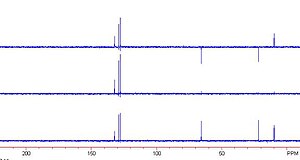
Carbon 13 Nuclear Magnetic Resonance Wikipedia

Diphenylacetylene 501 65 5 13c Nmr

12 12 C Nmr Spectroscopy And Dept Chemistry Libretexts

12 11 Chemical Shifts And Interpreting C Nmr Spectra Chemistry Libretexts

Carbon 13 Nmr Wikidoc

Nmr Reference Standards Sigma Aldrich

Dept Nmr Signals And Problem Solving Chemistry Steps

13carbon Nmr
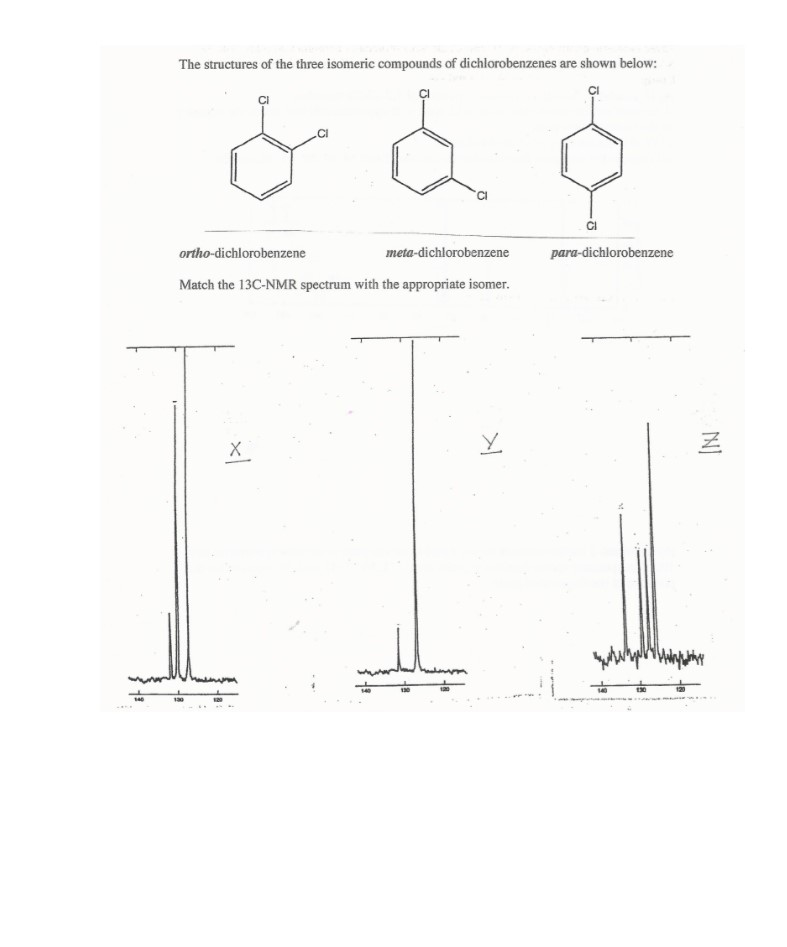
Solved 13c Nmr Spectroscopy Following Are The Infrared P Chegg Com
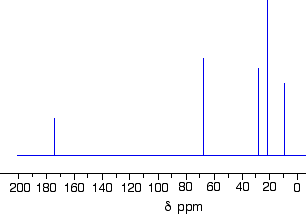
Interpreting C 13 Nmr Spectra

Examples Of 13c Nmr Spectra Anthony Crasto Spectroscopy
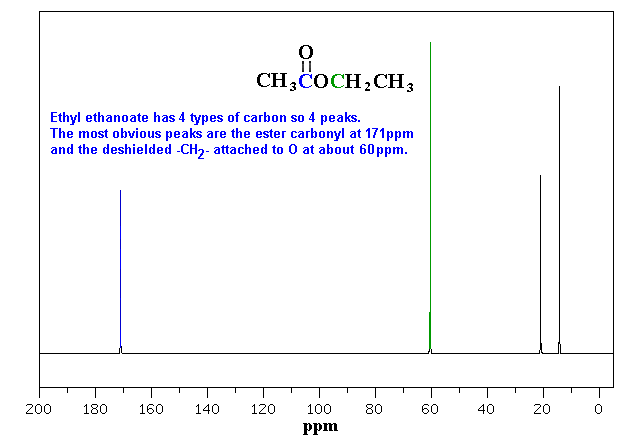
Ch13 Interpretting 13c Nmr

Help On 13c Nmr

Synthesis 13c Nmr And Uv Spectroscopic Study Of 13c Labeled Nitrile N Oxide Sciencedirect
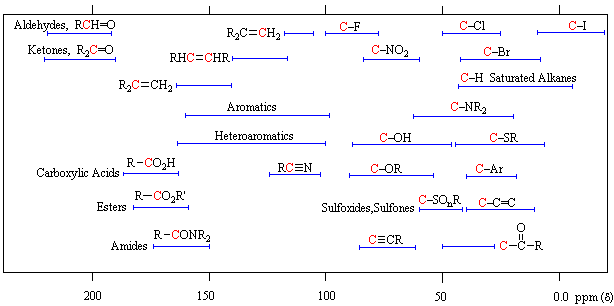
Nmr Spectroscopy
Carbon 13 Nmr Course Hero

C 13 Carbon Nmr Testing Services Numega Resonance Labs
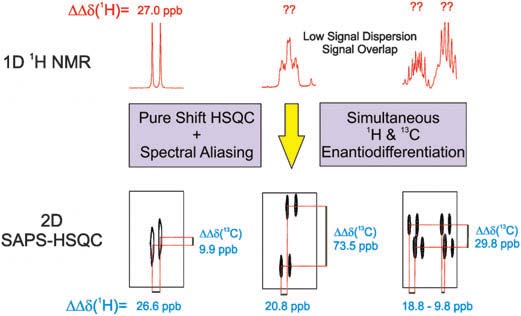
Simultaneous 1h And 13c Nmr Enantiodifferentiation From Highly Resolved Pure Shift Hsqc Spectra Sermn Nmr Service At Uab

12 02 Carbon 13 Nmr Spectroscopy Youtube

Illustrated Glossary Of Organic Chemistry 13c Nmr

Figure 13c Nmr Spectrum 125 Mhz Cdcl3 Of The Probe Probe Reports From The Nih Molecular Libraries Program Ncbi Bookshelf
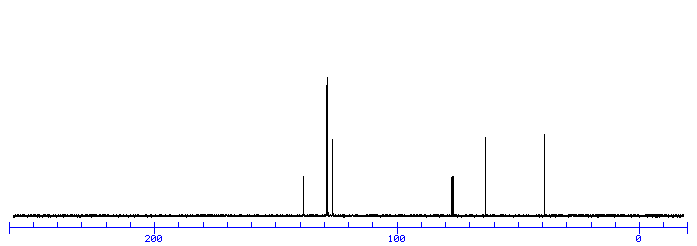
Beginning Problem 19 C Nmr
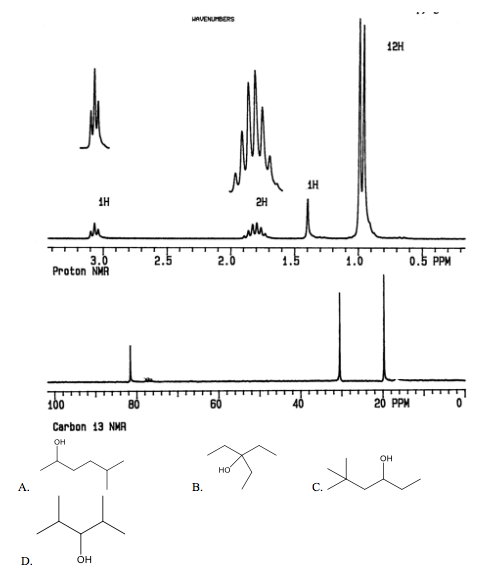
Solved 6 Consider The Ir H Nmr And 1 C Nmr Spectra Of Chegg Com

Carbon 13 Nmr Spectroscopy Youtube
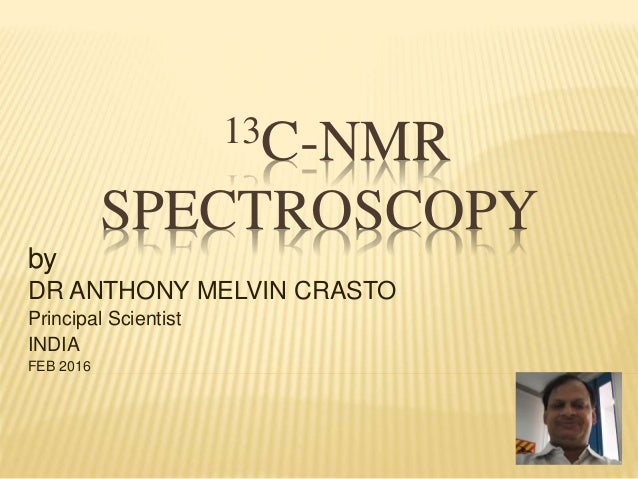
13 C Nmr Spectroscopy By Dr Anthony Melvin Crasto
File 13c Nmr Ethanol Gif Wikipedia

Synthesis 13c Nmr And Uv Spectroscopic Study Of 13c Labeled Nitrile N Oxide Sciencedirect

Cyclohexanone 108 94 1 13c Nmr
.jpg)
Assessing Regioselectivity Of Hydrochlorination

Diethyl Ether 60 29 7 13c Nmr
Http Www1 Udel Edu Chem Kohclasses Docs 13cnmrfor322 Pdf

Help On 13c Nmr

12 12 C Nmr Spectroscopy And Dept Chemistry Libretexts

13c Nmr Spectra Of A Urea Solution B Naoh Urea Solution C Download Scientific Diagram

13 C Nmr Spectrum Of Eugenol Download Scientific Diagram
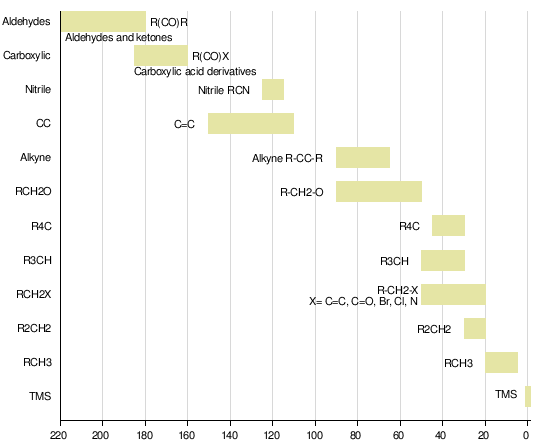
Carbon 13 Nuclear Magnetic Resonance Wikipedia
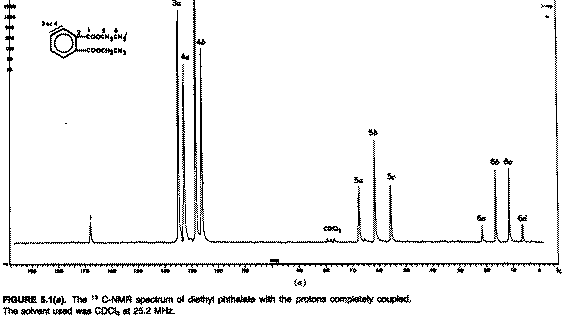
13c Applications
Q Tbn And9gcrrn3ne6nshxedjydxunamvmqv Hoq5d4jexwpxamkdzxogmfrq Usqp Cau

Carbon 13 Nuclear Magnetic Resonance For Analysis Of Metabolic Pathways Chapter Methodologies For Metabolomics

Introduction To Carbon Nmr

Unravelling Glycobiology By Nmr Spectroscopy Intechopen

13c Nmr Spectroscopy Ppt Download

13c Nmr Spectrum An Overview Sciencedirect Topics

My First 13 Nmr Spectrum
Nmrc Utah Edu Documents Resources Aspirin Pdf
Http S3 Amazonaws Com Prealliance Oneclass Sample 9ea3vbjqwb Pdf

Sapling Week 6 Technique N 1 Hnmr And Cnmr Flashcards Quizlet

Methanol 67 56 1 13c Nmr

Skeletal And Chlorine Effects On 13c Nmr Chemical Shifts Of Chlorinated Polycyclic Systems

13c Nmr Spectroscopy

How Can I Report 13 C Nmr Data Example

Spin Spin Splitting And Coupling Coupling In 13c Nmr Spectra
Q Tbn And9gcrphduj Xpjcl93cy0sbosp1eautxqimak Iah5bqqtnxde0wgu Usqp Cau

Table 1 From Complete 1 H And 13 C Nmr Chemical Shift Assignments Of Mono To Tetrasaccharides As Basis For Nmr Chemical Shift Predictions Of Oligosaccharides Using The Computer Program Casper Semantic Scholar

Nmr Services For Chemical Characterization And Analysis
C 13 Nmr Spectroscopy Chemistry Libretexts



